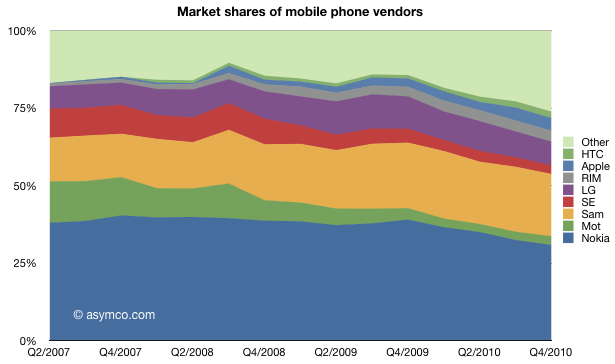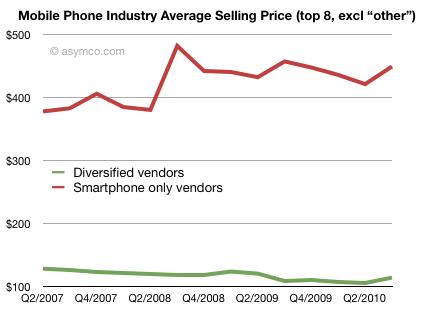Windows Phone 7 launched on 10 devices over 60 carriers in over 30 countries with 1.5 million of channel inventory in 6 weeks. Given the breadth of distribution, that number is not huge, amounting to less than 10k phones per operator.
Curiously, Windows Mobile was still selling in significant volumes last quarter. Maybe even higher than WP7 is selling now. In Q3 2009 Canalys reported 3.6 million WinMo units sold. In Q3 2010 Gartner estimated 2.3 million were sold through to end users. Even nine months ago Windows Mobile was running at 3.7 million units or over 1.8 million every six weeks.
Microsoft also announced they have 18,000 developers with 4,000 apps on the WP7 marketplace. That’s one developer for every 83 devices in inventory.
Microsoft’s Achim Berg:
our numbers are similar to the performance of other first generation mobile platforms…
We’re comfortable with where we are, and we are here for the long run; Windows Phone 7 is just the beginning.
Continue reading “Microsoft's mobile effort: back to the future?”


